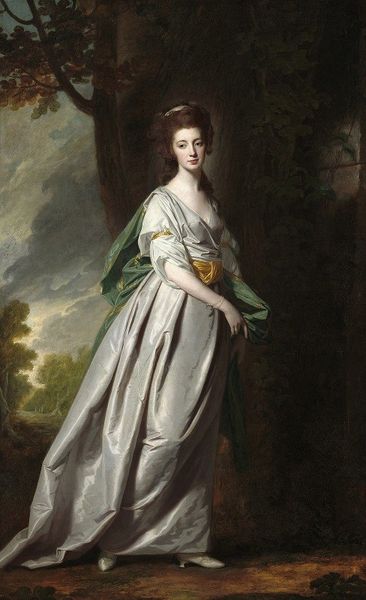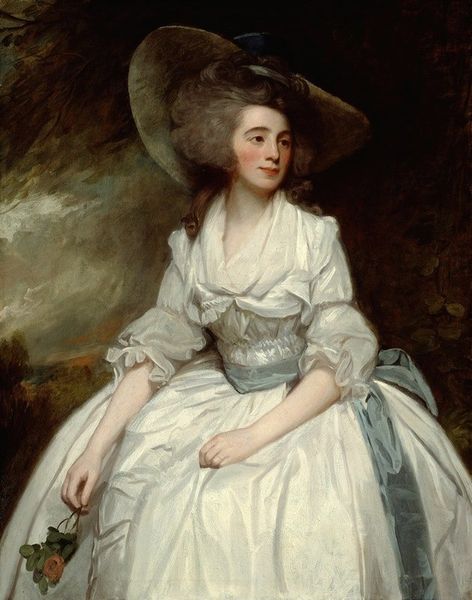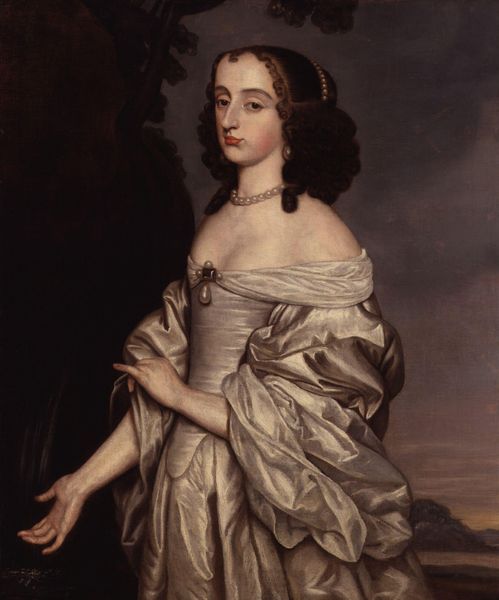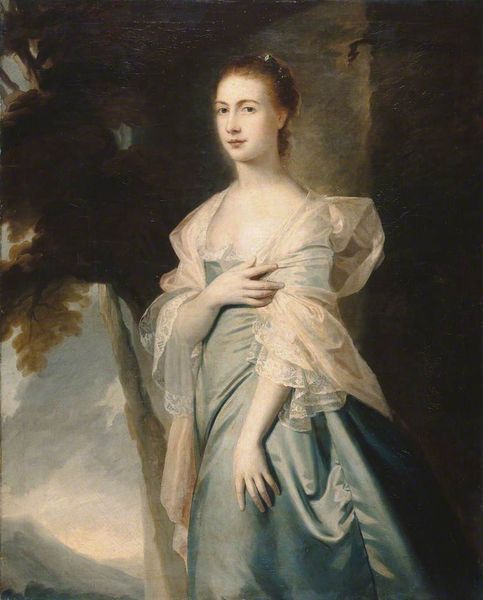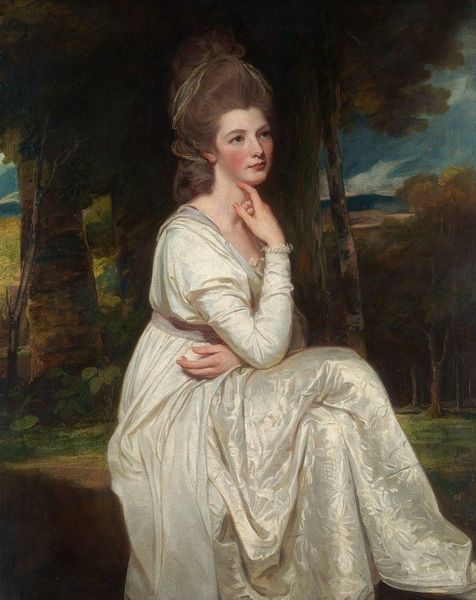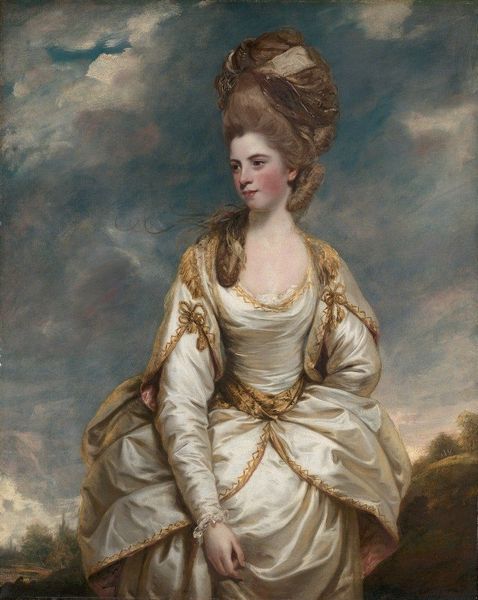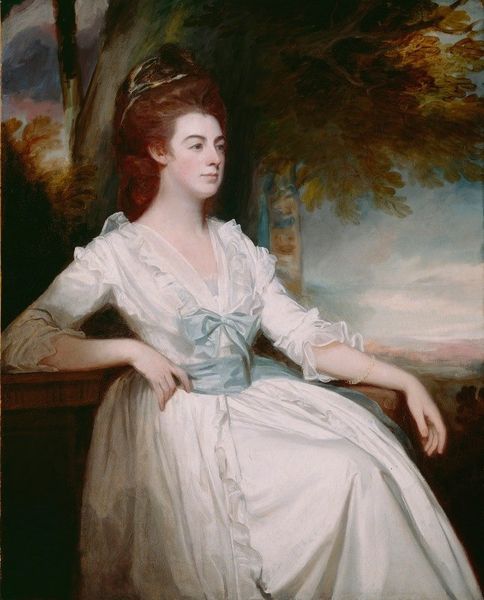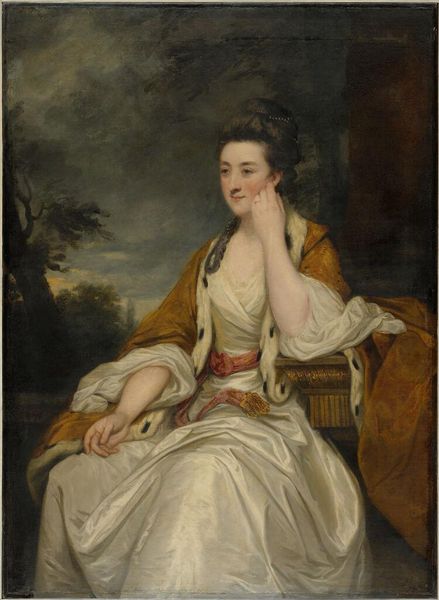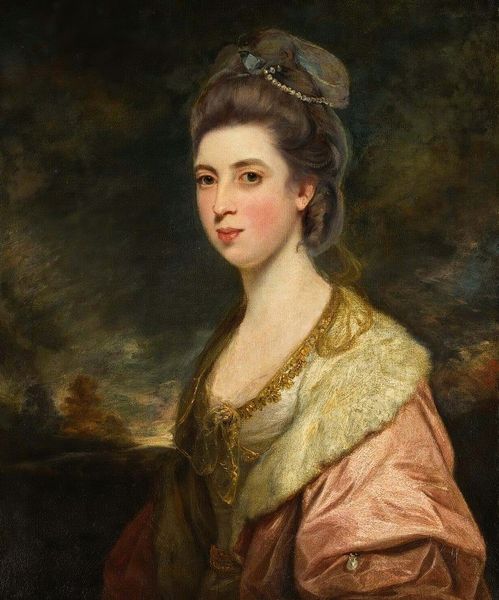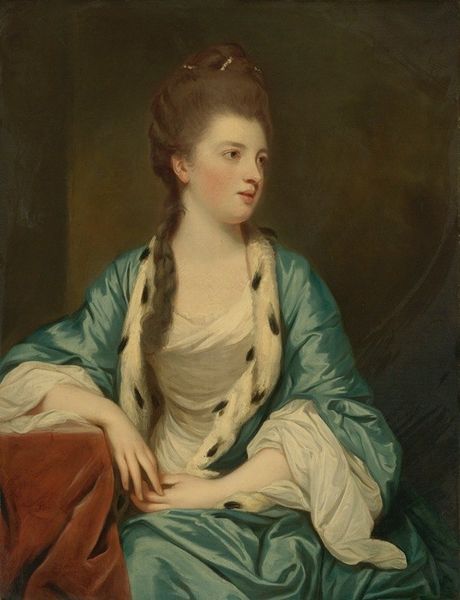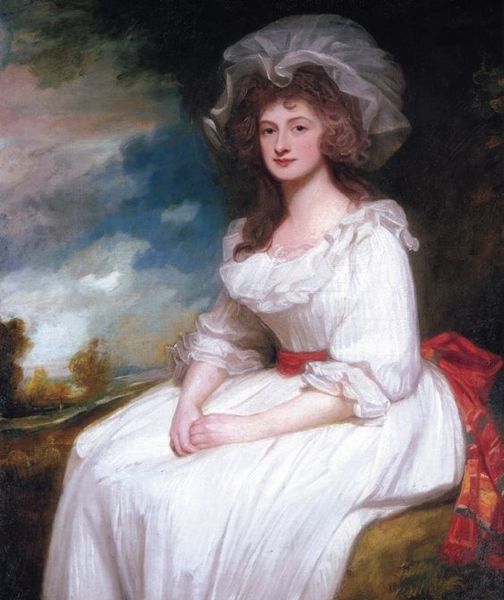
painting, oil-paint
#
portrait
#
neoclacissism
#
painting
#
oil-paint
#
history-painting
#
academic-art
Copyright: Public Domain: Artvee
George Romney painted Elizabeth, Lady Blunt, in England during the late 18th century, a time when portraiture served as a potent display of social standing. The painting captures Lady Blunt in a pose of refined leisure, leaning against a plinth that supports a bust of a bearded man, perhaps a philosopher or poet, along with a rolled manuscript. These props were visual shorthand for intellect and classical education, qualities associated with the aristocracy. Her silvery dress and delicate jewelry further emphasize her elevated status. Romney was a leading portraitist who, like many artists of his time, relied on patronage from the wealthy elite. The Royal Academy also played a key role at the time, shaping artistic taste and providing a venue for artists to exhibit their work. To fully understand a work like this, we often turn to sources like letters, diaries, and social histories, to gain a deeper understanding of the complex relationship between art, power, and society.
Comments
No comments
Be the first to comment and join the conversation on the ultimate creative platform.
